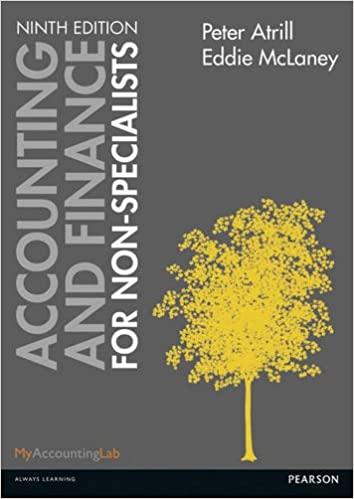1. A manufacturing company may choose to use either a job order cost accounting system or a process cost accounting system, without considering the type of products or the process it uses to produce its products. True False 2. Process cost accounting systems are commonly used by companies that manufacture standardized products by passing them through a series of manufacturing steps. True False 3. The process cost summary is an important managerial accounting report produced by a process cost accounting system. True False 4. The process cost summary presents calculations of the cost of units completed during the reporting period but does not present any information about the ending goods in process inventory. True False 5. Process costing is applied to operations with low production volume and heterogeneous products. True False Part 2, Multiple Choice Questions (1 Pt.each) Circle the correct answer. 1. A system of accounting in which the costs of each process are accumulated separately and then assigned to the units of product that passed through the process is a: A. General cost accounting system. B. Process cost accounting system. C. Job order cost accounting system. D. Manufacturing cost accounting system. E. Goods in process accounting system. 2. Which of the following characteristics applies to process cost accounting and not to job order cost accounting? A. Use of a predetermined overhead rate. B. Identifiable lots of production. C. Equivalent units of production. D. Labor time ticket for each employec. E. Use of a single Goods in Process account. 3. A company that applies process costing is most frequently characterized by: A. Low standardization and high production volume. B. Custom orders and homogeneous products. C. Repetitive production and heterogeneous products. D. Repetitive production and low production volume. E. Homogeneous product and high production volume. Part 3. Multiple Choice Problems (3 Pt.each) Circle the correct answer 1. At the beginning of the recent period, there were 900 units of product in a department, one- third completed. These units were finished and an additional 5,000 units were started and completed during the period. 800 units were still in process at the end of the period, onc-fourth completed. Using the weighted average valuation method, the cquivalent units produced by the department were: A. 6,700 units. B. 5,900 units. C. 5,800 units. D. 6,100 units. E. 8,500 units. 2. The Richmond Company uses the weighted-average method in its process costing system. The company has only a single processing department. The company's ending work in process inventory on August 31 consisted of 18,000 units. The units in the ending work in process inventory were 100% complete with respect to materials and 60% complete with respect to labor and overhead. If the cost per equivalent unit for August was $2.75 for materials and $4.25 for labor and overhead, the total cost assigned to the ending work in process inventory was: A. $126,000 B. $75,600 C. $80,100 D. $95,400 3. A company uses a process cost accounting system. Its Assembly Department's beginning inventory consisted of 50,000 units, 3/4 complete with respect to direct labor and overhead. These units were completed and transferred out and the department started and transferred out an additional 120,000 units this period. The ending goods-in-process inventory consists of 40,000 units that are 1/4 complete with respect to direct labor and overhead. All direct materials are added at the beginning of the process. The department incurred direct labor costs of $24,000 and overhead costs of $32,000 for the period. Also, its beginning inventory included $6,600 of direct labor and $9,800 of overhead costs. The direct labor cost per equivalent unit is: A. $0.141. B. $0.170. C. $0.200. D. $0.255. E. $0.310 4. The Assembly Department started the month with 59,000 units in its beginning work in process inventory. An additional 274,000 units were started into production during the month to begin processing in the Assembly Department. There were 21,000 units in the ending work in process inventory of the Assembly Department. How many units were completed and transferred out to the next processing department during the month? A. 333,000 B. 236,000 C. 354,000 D. 312,000









